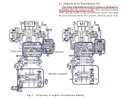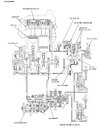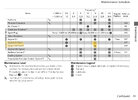GLC
Member
I've been trying to think of the reason why Honda decided a second oil filter is necessary for DCT transmissions. Clearly I am not technically advanced enough to answer this question myself, but if the engine and gearbox are using the same oil with only one filling point, then clearly the oil that is going around the crankshaft, up the cylinder walls and around the valve gear, is the same oil that is going into the gearbox, just like all other Honda motorcycle engines. So if it is the same oil from the same sump, why does it need two oil filters? Enlighten me someone please.





